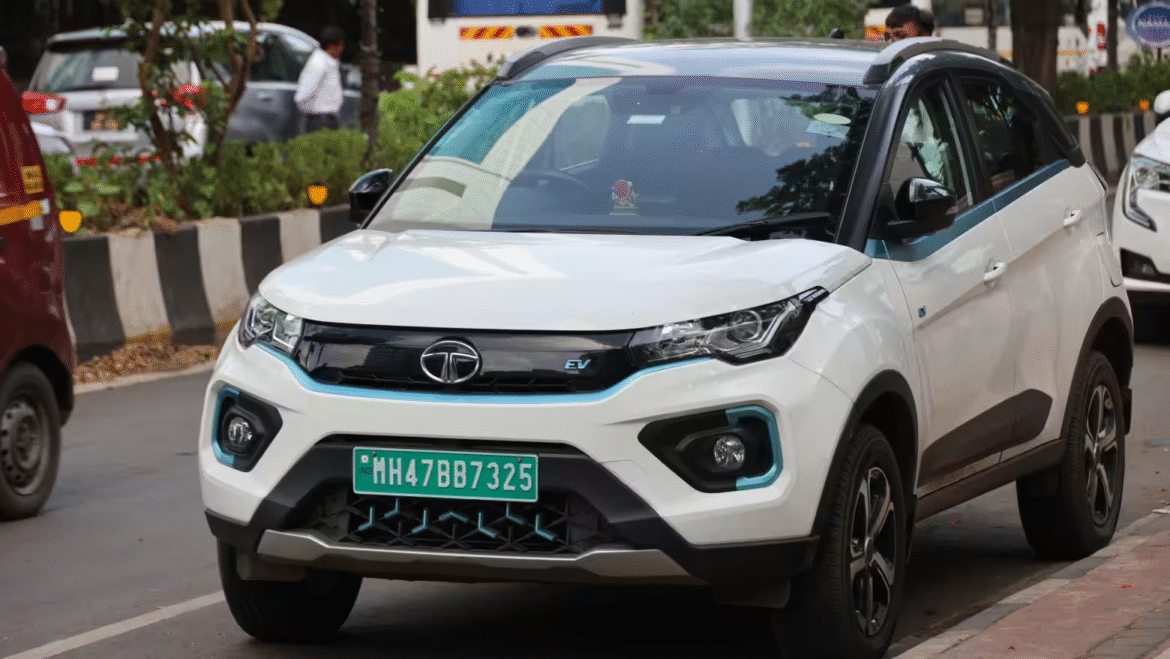AI Generated Summary
- The city has topped the inaugural India Electric Mobility Index (IEMI) 2024, a comprehensive assessment of all Indian states and UTs across 16 key performance indicators spread over three core themes — EV adoption, charging infrastructure readiness, and EV technology and innovation.
- In total, six EVs worth over Rs 2 crore and 38 priced between Rs 1 crore and Rs 2 crore have been registered, indicating a wide spectrum of adoption across income groups.
- Under the policy introduced in September 2022, the first 42,000 buyers of e-vehicles across all categories are eligible for subsidies ranging from Rs 3,000 to Rs 2 lakh over a five-year period.
Chandigarh has taken pole position in India’s electric mobility landscape, outpacing major states and Union Territories in electric vehicle (EV) adoption, infrastructure, and innovation, according to a recent report by NITI Aayog.
The city has topped the inaugural India Electric Mobility Index (IEMI) 2024, a comprehensive assessment of all Indian states and UTs across 16 key performance indicators spread over three core themes — EV adoption, charging infrastructure readiness, and EV technology and innovation.
Chandigarh, Delhi, and Maharashtra emerged as the overall frontrunners, each showcasing robust and evolving ecosystems that support the transition to electric mobility. The report highlights Delhi and Maharashtra as leaders in transport electrification, while regions like Haryana, Karnataka, Ladakh, and Himachal Pradesh have been recognized for their strides in developing charging infrastructure.
In terms of research and innovation, Delhi, Tamil Nadu, Maharashtra, Karnataka, Haryana, and Telangana have emerged as key hubs driving technological advancement in the EV sector.
A Policy-Driven Push
The NITI Aayog report notes that 29 states and Union Territories have notified dedicated EV policies, while four more are in the drafting stage. These regional policies aim to support the national goal through localized incentives, regulatory frameworks, and strategic planning.
Chandigarh, for its part, has made aggressive policy moves. The UT Administration has extended EV purchase incentives to an additional 1,500 electric cars, after the original quota of 2,000 subsidized cars was exhausted in May this year. Under the policy introduced in September 2022, the first 42,000 buyers of e-vehicles across all categories are eligible for subsidies ranging from Rs 3,000 to Rs 2 lakh over a five-year period.
The administration has also enhanced benefits for electric two-wheelers, including insurance support and special incentives for women buyers. Subsidies for electric bicycles have also been increased as part of a broader plan to encourage greener alternatives for urban mobility.
In line with its push to meet the 18% EV penetration target for FY 2025–26, Chandigarh plans to further expand its public EV charging station network, ensuring coverage in all sectors of the city.
The Numbers Tell the Story
Despite being India’s first planned city, Chandigarh is grappling with a paradox — it has more vehicles than people, the highest per capita vehicle density in the country. Yet, amidst this congestion, the electric mobility wave is gaining momentum.
Since 2020, the city has registered 8,469 zero-emission vehicles, including 5,442 two-wheelers and 3,027 four-wheelers. The growth has been steady:
- 2020: 46 e-vehicles registered
- 2021: 245
- 2022: 1,006
- 2023: 2,870
- 2024: 3,078
- 2025 (until June 30): 1,224
This consistent rise underscores growing consumer confidence and awareness.
Interestingly, Chandigarh isn’t just witnessing mass-market EV adoption — it’s also seeing a surge in high-end electric vehicles. Among them is the Porsche Taycan Turbo S, priced at Rs 2.53 crore, currently the most expensive electric light motor vehicle (LMV) registered in the city. In total, six EVs worth over Rs 2 crore and 38 priced between Rs 1 crore and Rs 2 crore have been registered, indicating a wide spectrum of adoption across income groups.
A National Perspective
Nationwide, the momentum is unmistakable. India registered over 12 lakh EVs in 2024, with electric two-wheelers and cars now comprising 5.3% of private vehicle sales. As of December 2024, there were over 25,000 public EV charging stations across the country, a testament to the rapidly growing infrastructure.
As India accelerates toward a sustainable transport future, Chandigarh’s proactive policies, infrastructure development, and rising adoption rates position it as a model city for EV transformation. The city’s success story underlines the power of well-crafted policy, strategic planning, and public participation in driving green change.




